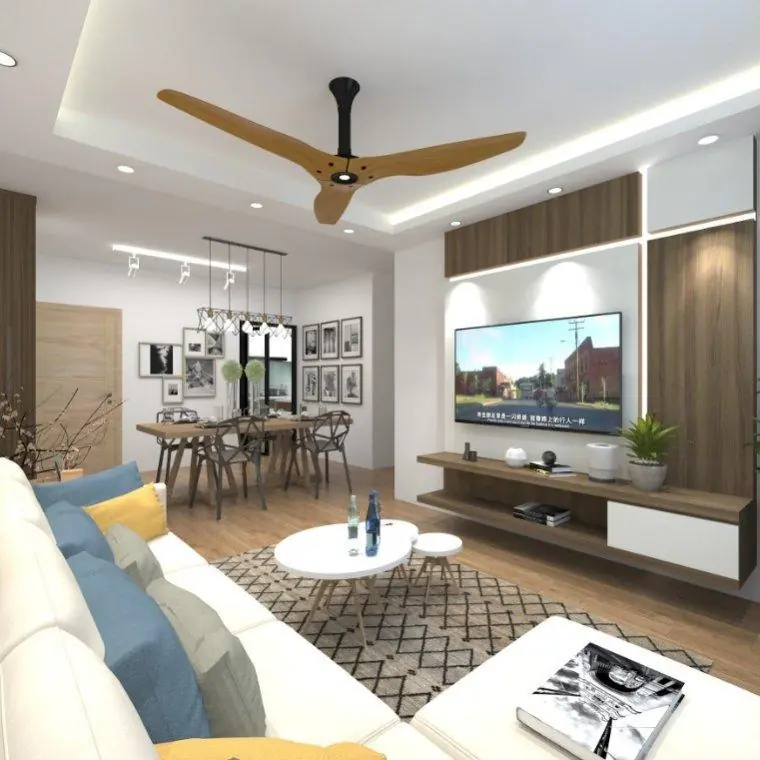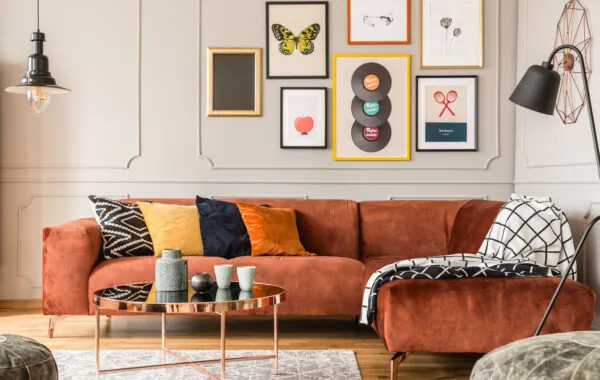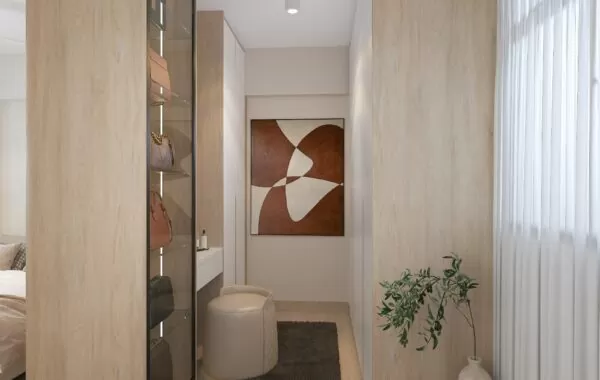Beginning your journey of HDB interior design involves a meticulous understanding and integration of the seven essential elements that shape a space. Each component, from colour and lighting to texture and pattern, contributes to the overall aesthetic and functionality of a room.
1. Space
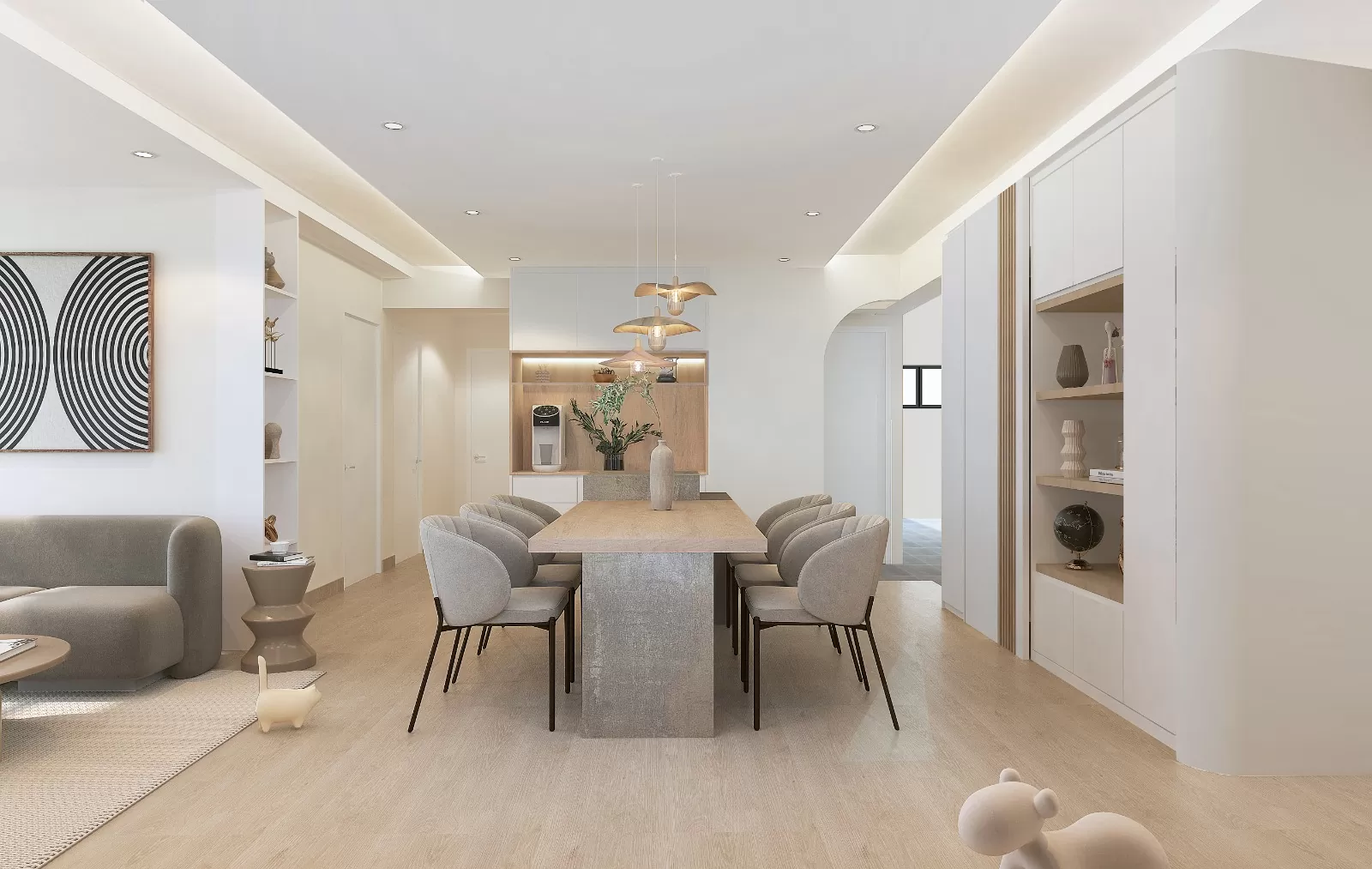
In the realm of expert HDB interior design, space becomes a crucial consideration, encompassing the three-dimensional dimensions of length, breadth, and height. Balancing positive space with objects and negative space. Positive space refers to the entire space of the room including furniture and decor, whilst negative space refers to the area not occupied by any objects. Balancing these two spaces is essential to prevent overcrowding and maintain a spacious, uncluttered feel.
2. Line
The concept of lines plays a pivotal role in HDB interior design. Whether straight or curved, lines are woven into every element. Furniture pieces cast defining lines, while doorways create pathways that influence the flow between rooms. While curved lines may pose challenges in smaller HDB interior design spaces, they introduce a unique charm.
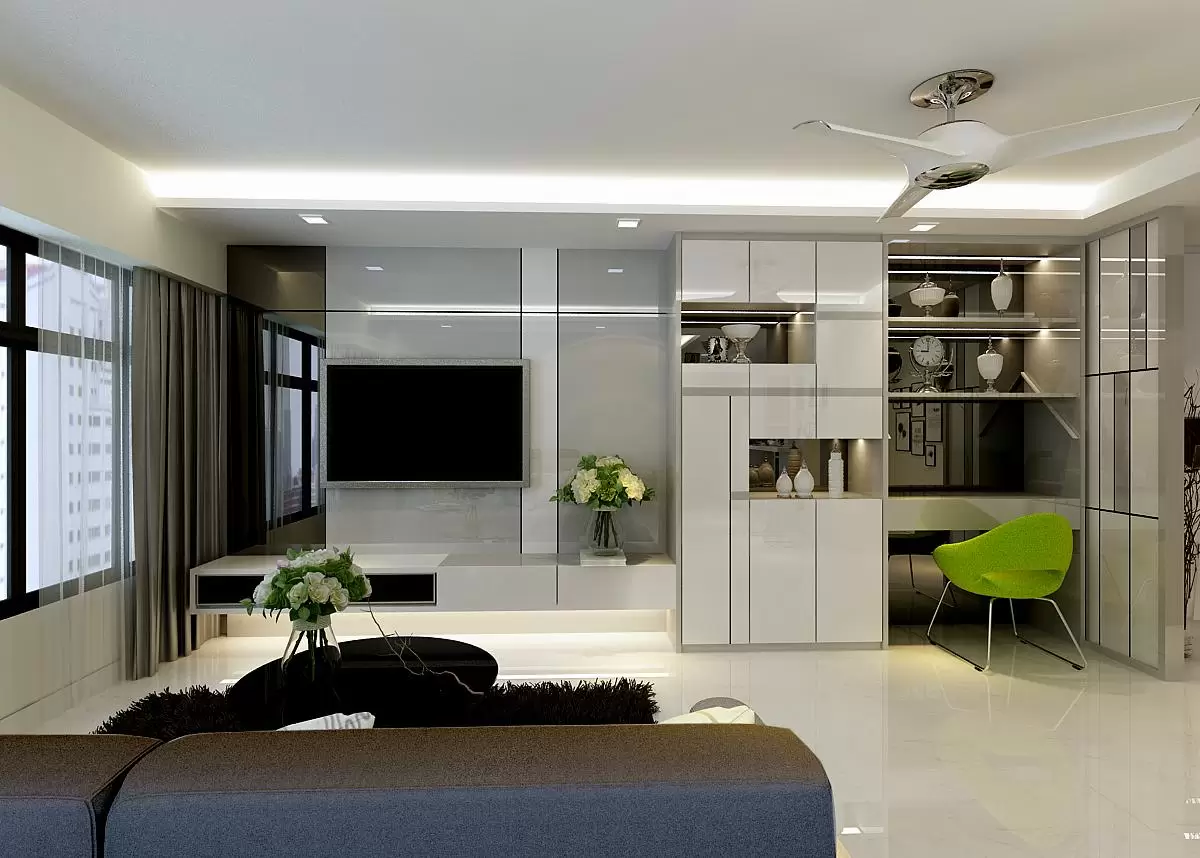
Both structural features and furnishings contribute lines that impact the overall ambience of HDB interior design, guiding the eye toward focal points. Embracing a diverse mix of line types creates a dynamic, adding vibrancy and breaking up the monotony of the room.
3. Form
Form encompasses the shape of the room and its furnishings. Geometric shapes exhibit defined lines and edges, while natural shapes embody organic, nature-inspired forms. Achieving harmony involves ensuring furnishings complement the room’s form, striking a balance for a cohesive and visually pleasing HDB interior design.
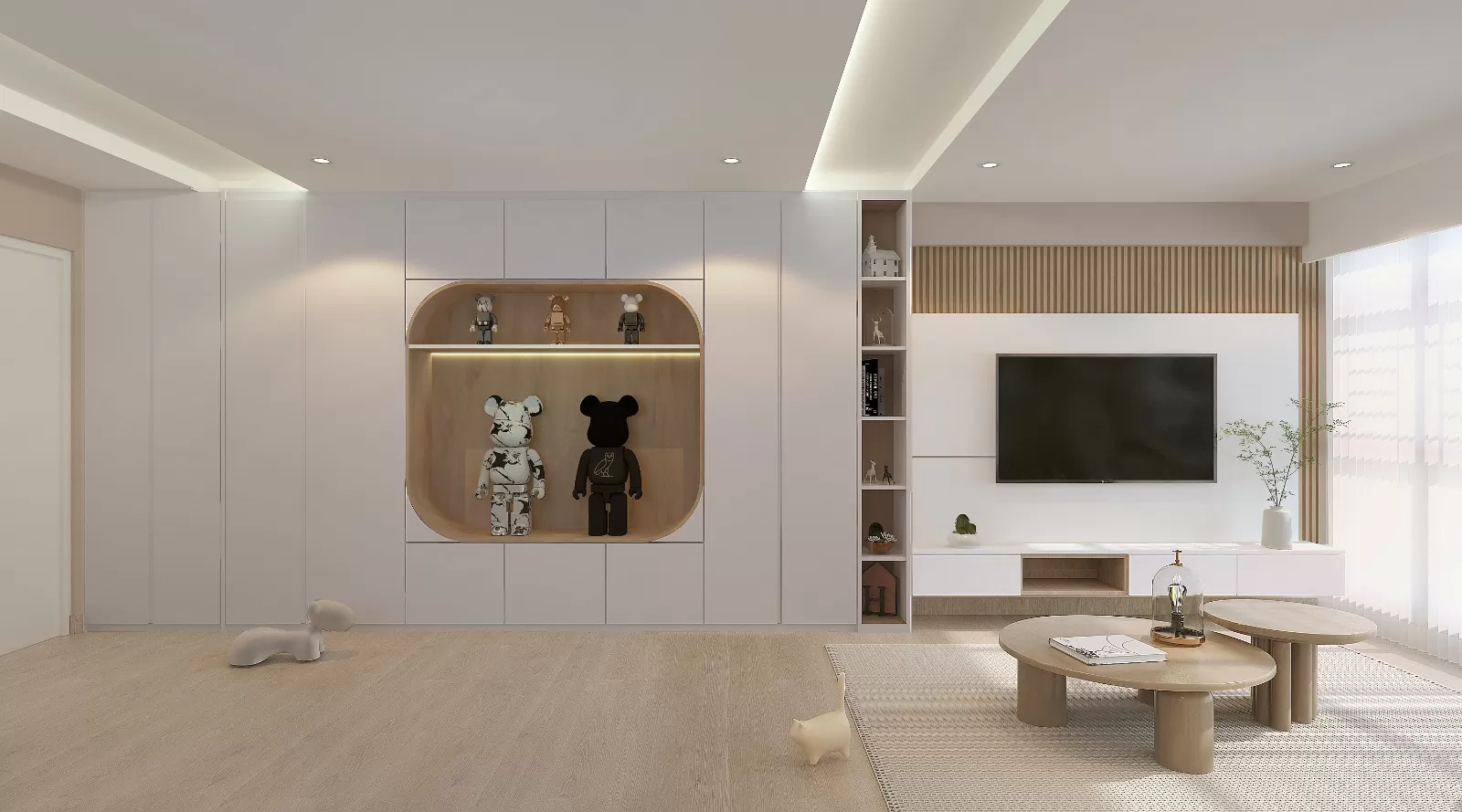
4. Light
Light emerges as a pivotal element of interior design, influencing both the aesthetics and mood of a space while harmonising with other HDB interior design design elements. Light is categorised into Natural and Artificial, each plays a crucial role in shaping the atmosphere.
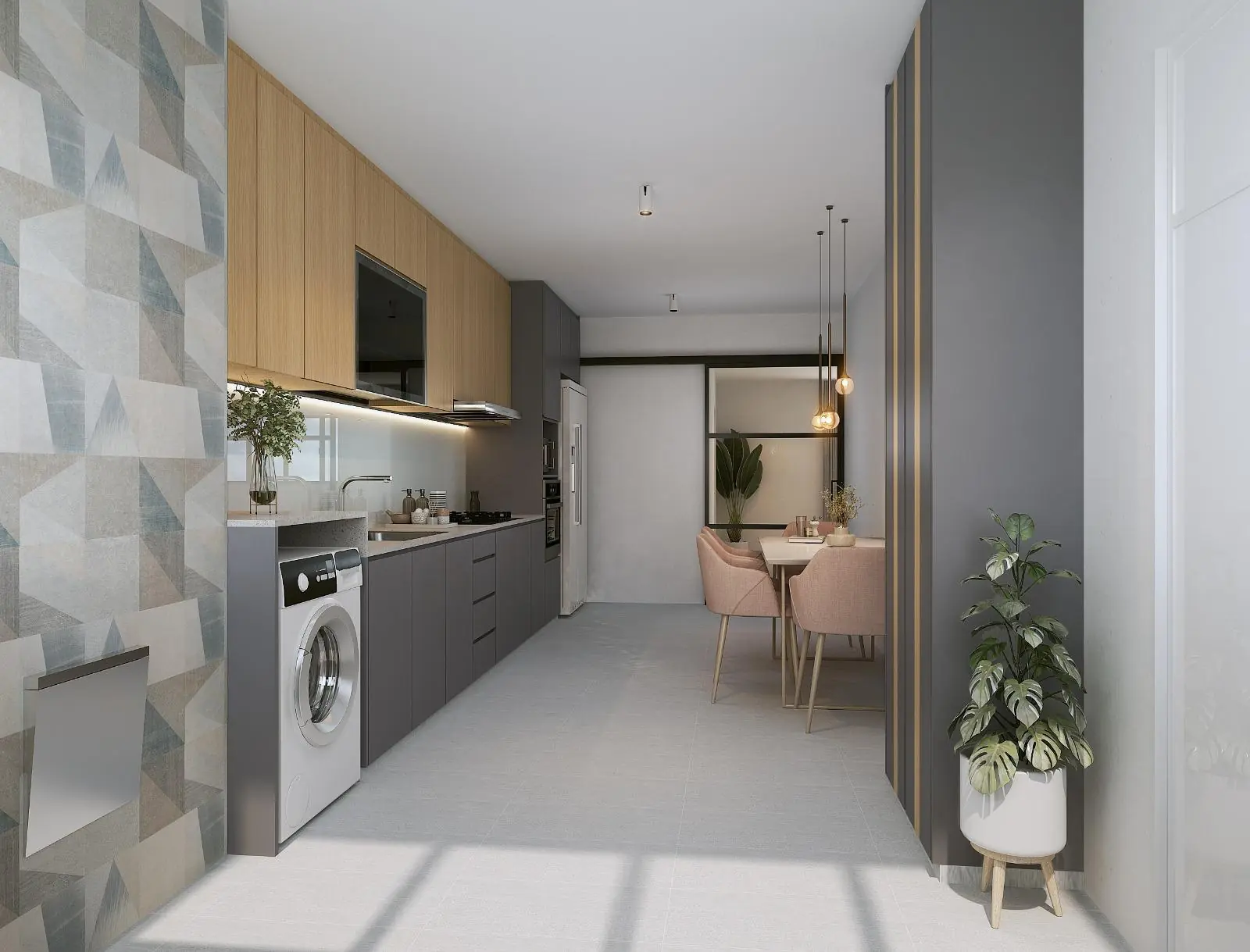
The addition of natural lighting can be added through the expert use of windows and doors. While artificial lighting, including Task, Accent, and Ambient lighting can be used to supplement, complement, or highlight natural light, setting the desired tone and adding unique benefits to HDB interior design.
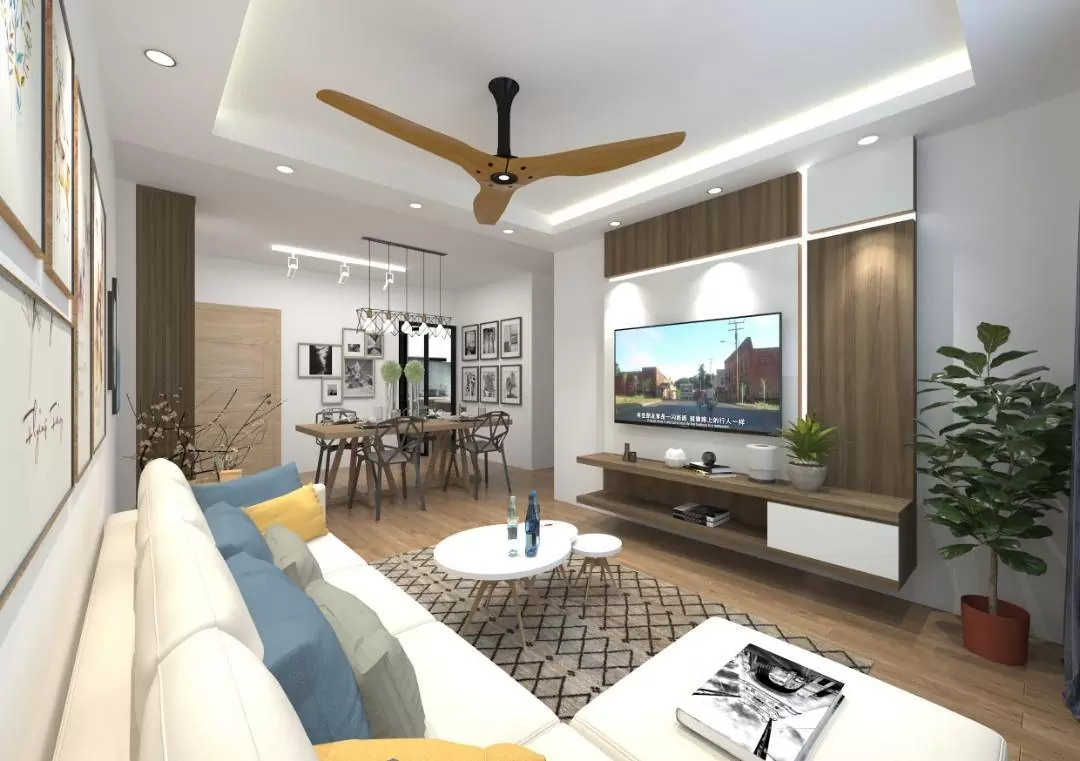
5. Colour
Colour becomes a powerful tool for creating the desired emotion in HDB interior design. Beyond aesthetics, colours can evoke memories and stir emotions, influencing both physical and psychological responses. When implementing colour, consider the purpose of the space, how lighting interacts with the colour, and the size of the space—notice how each element of HDB interior design is intricately woven into the overall interior design.
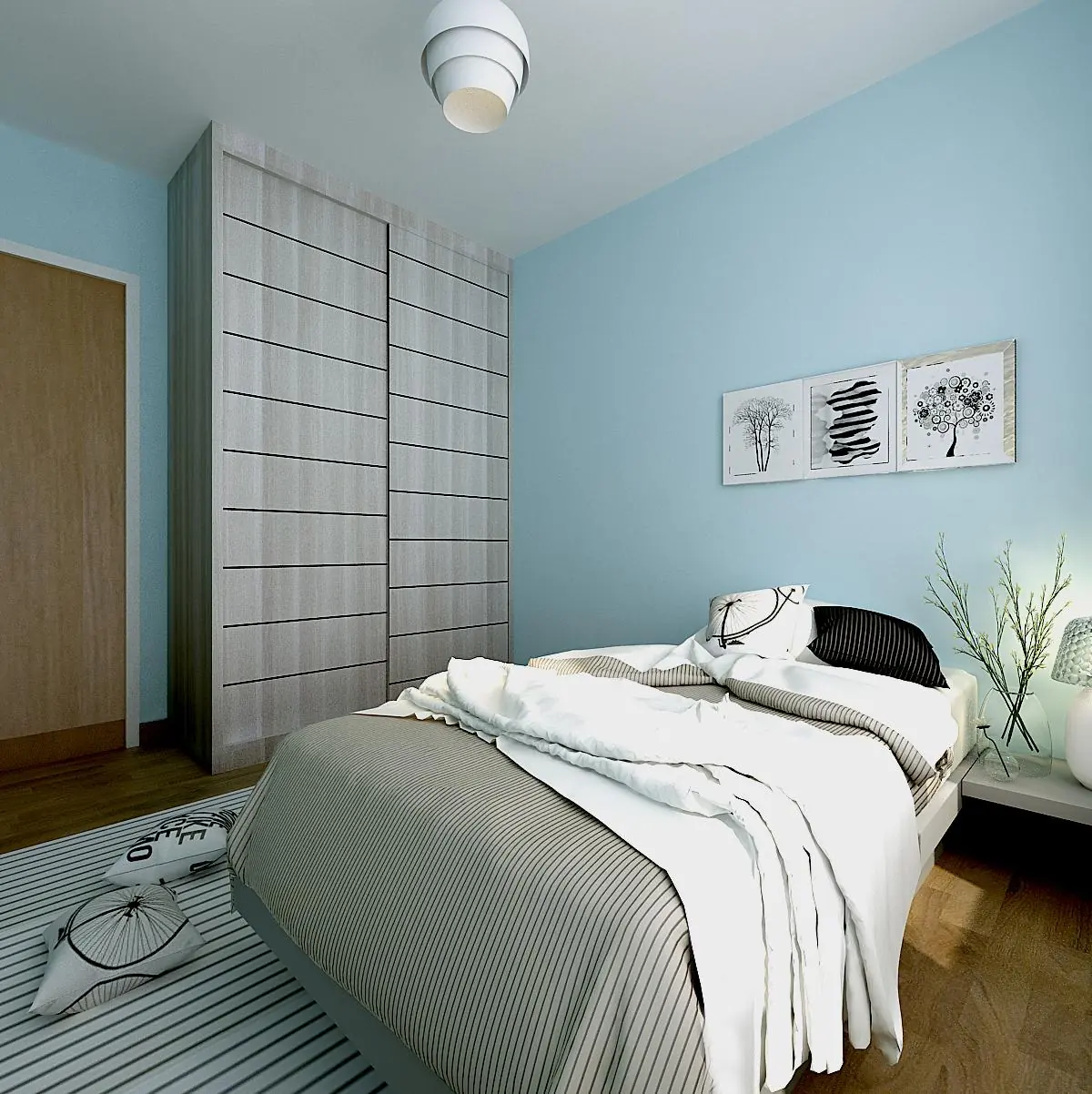
A practical tip is to incorporate lighter or brighter colours in smaller spaces to create an illusion of more room, while darker colours can add a powerful dimension to larger spaces. Understanding the interplay of colour within these design parameters is key to achieving a harmonious and emotionally resonant home environment.
6. Texture
Texture refers to the tactile surface of an object or finish. Often overlooked, it possesses the unique ability to bring depth to a room. Skillfully blending textures within a space to create a subtle sense of depth, contributing to both the visual and tactile aspects of the room. Whether smooth or textured, the element of texture enhances the overall look and feel of HDB interior design.
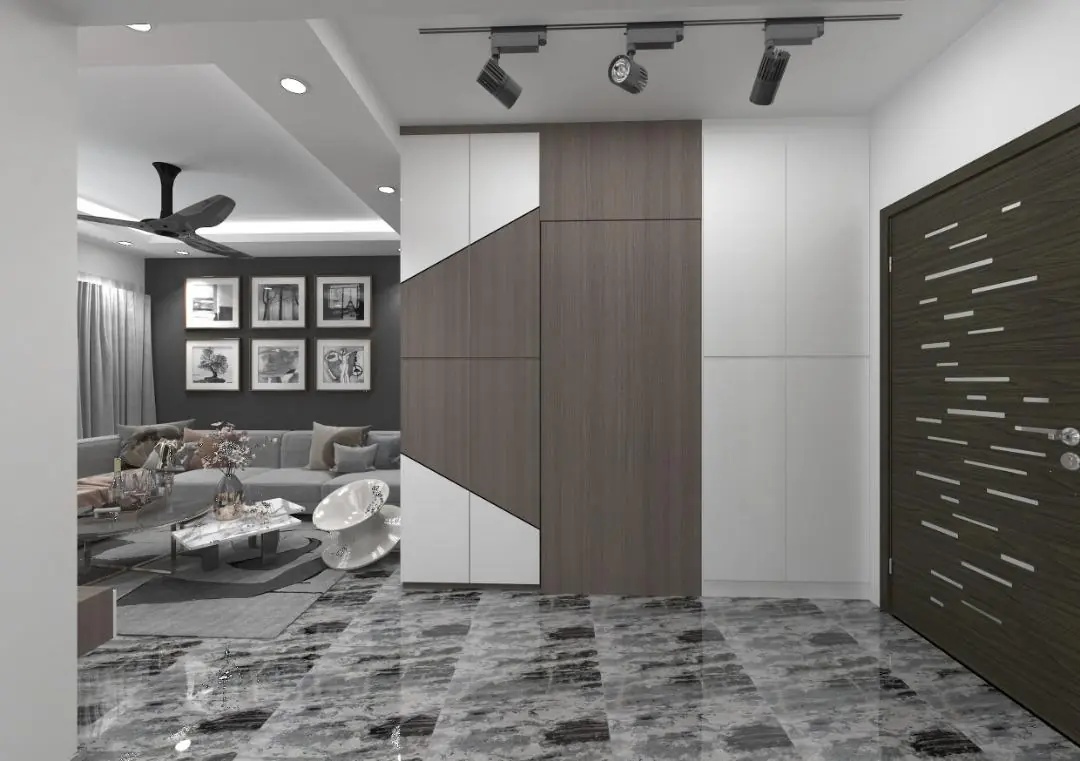
Texture can be categorised into two forms—visual and actual—offering a comprehensive sensory experience where visual texture is perceived by the eye, while actual texture is a tangible element that can be felt. Understanding and incorporating texture into HDB interior design adds a layer of sophistication, transforming the space into a rich and multi-dimensional environment.
7. Pattern
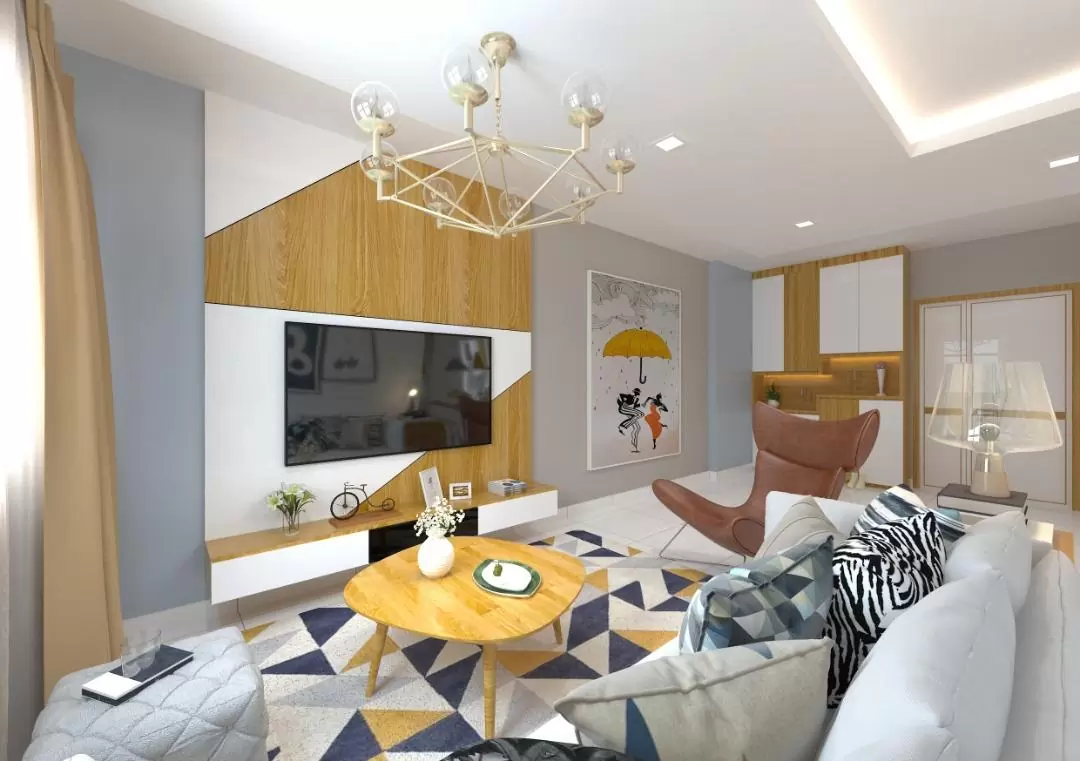
Lastly, pattern emerges as a transformative element that elevates the HDB interior design. Paired with colours, patterns are skillfully incorporated into walls, flooring, and furnishings. Much like texture, patterns infuse a dynamic feel, breaking the monotony of a room. The implementation of patterns mirrors considerations similar to colour—understanding the purpose of the space, anticipating how lighting interacts with colour, and assessing the size of the room.
The mastery of the seven elements—space, line, form, light, colour, texture and pattern—equips you to craft spaces that transcend the mundane. These elements of HDB interior design serve as the building blocks, offering a palette of possibilities to create environments that not only meet functional needs but also resonate with the homeowner. The synergy of these elements becomes the cornerstone, breathing life into every room and transforming spaces into personalised, visually captivating reflections of style and purpose.
Incorporate These 7 Elements of HDB Interior Design To Your Home Now.
If you are looking to build your dream home, then look no further than us!
With 10 years of experience under our belts, our designers are here to realise your dream home.
Start your stress-free renovation journey with Reno Loft today.
Head on to Our Portfolios to browse more of our proud work!

